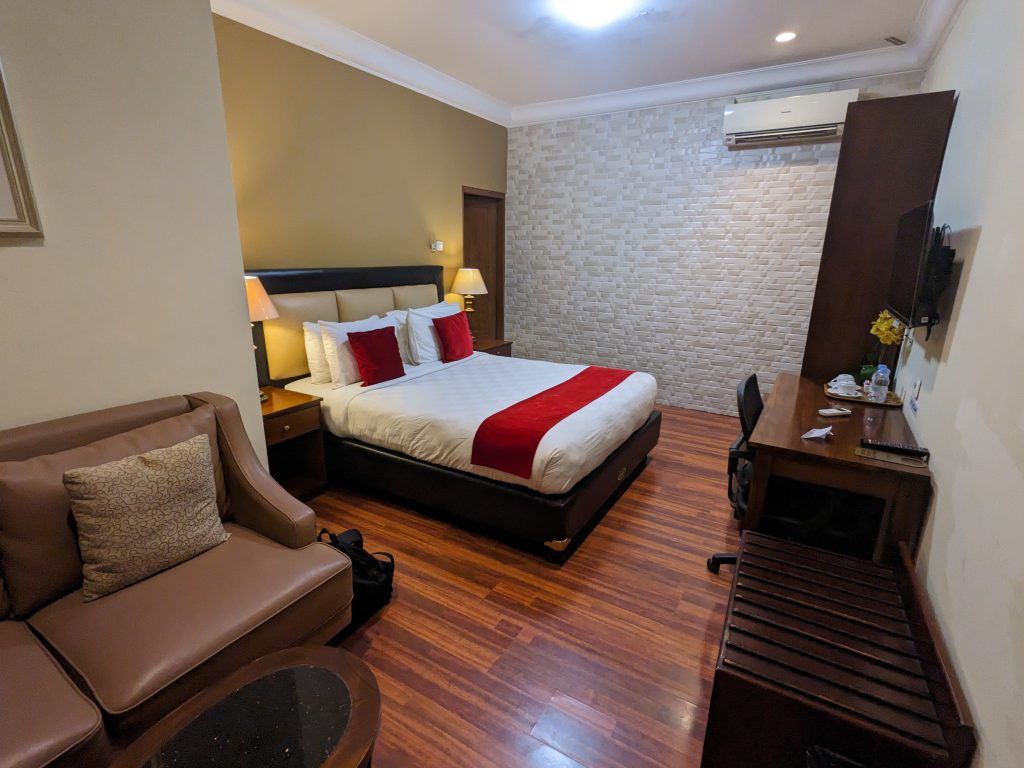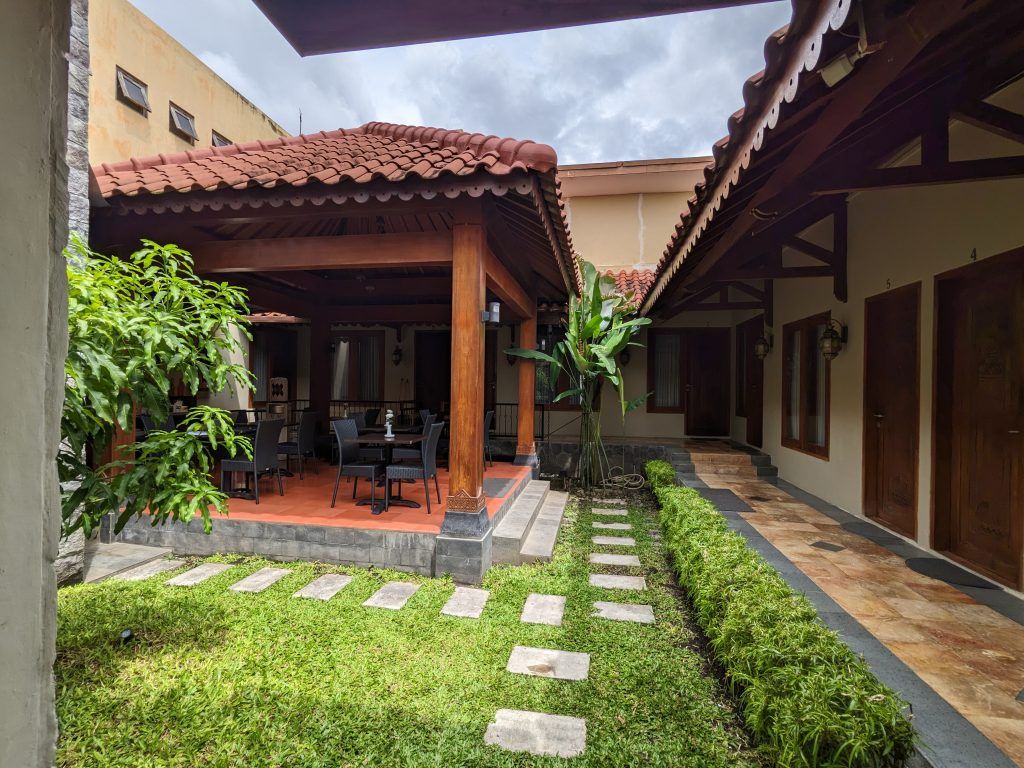Java is huge. It’s the 13th largest island in the world and has a population of over 150 million. I only explored a small sliver of this beautiful island. As you can see below, even that small taste was enchanting.
Surfing in Java
I primarily came to Jave to surf. I stayed in a small fishing village of less than 1,000 people in Southcentral Java called Batukaras. The wave here is considered one of the best longboard waves in the world. The wave starts at the point pictured below and then swings around to the left on a right handed ride all the way to the beach.
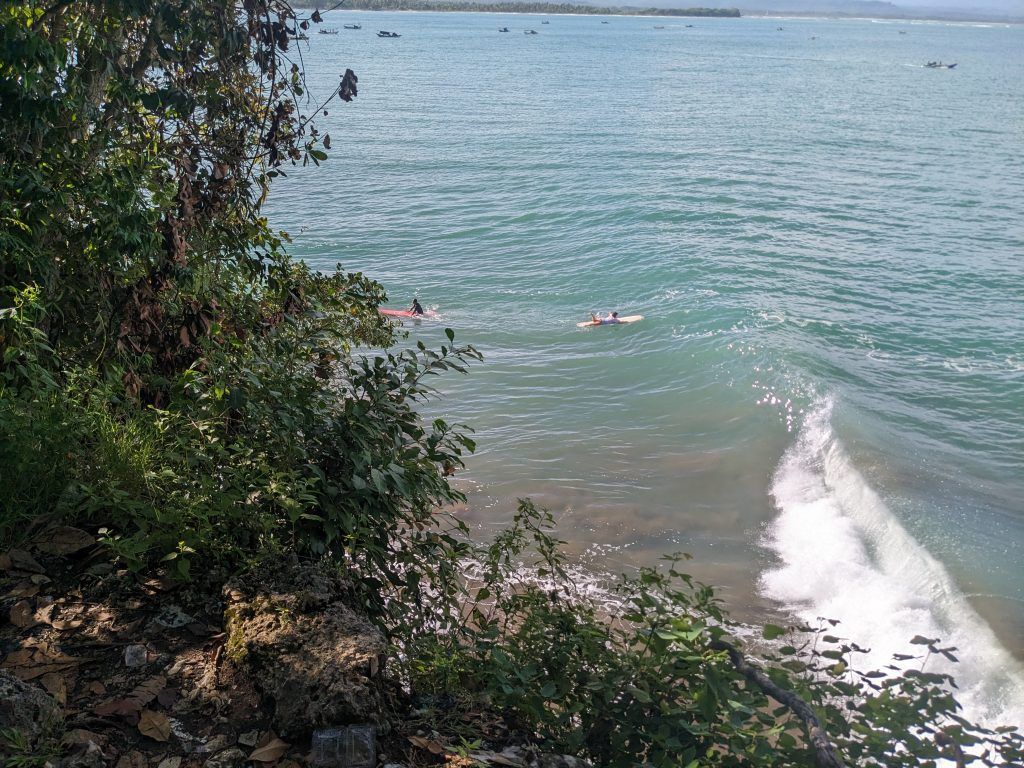
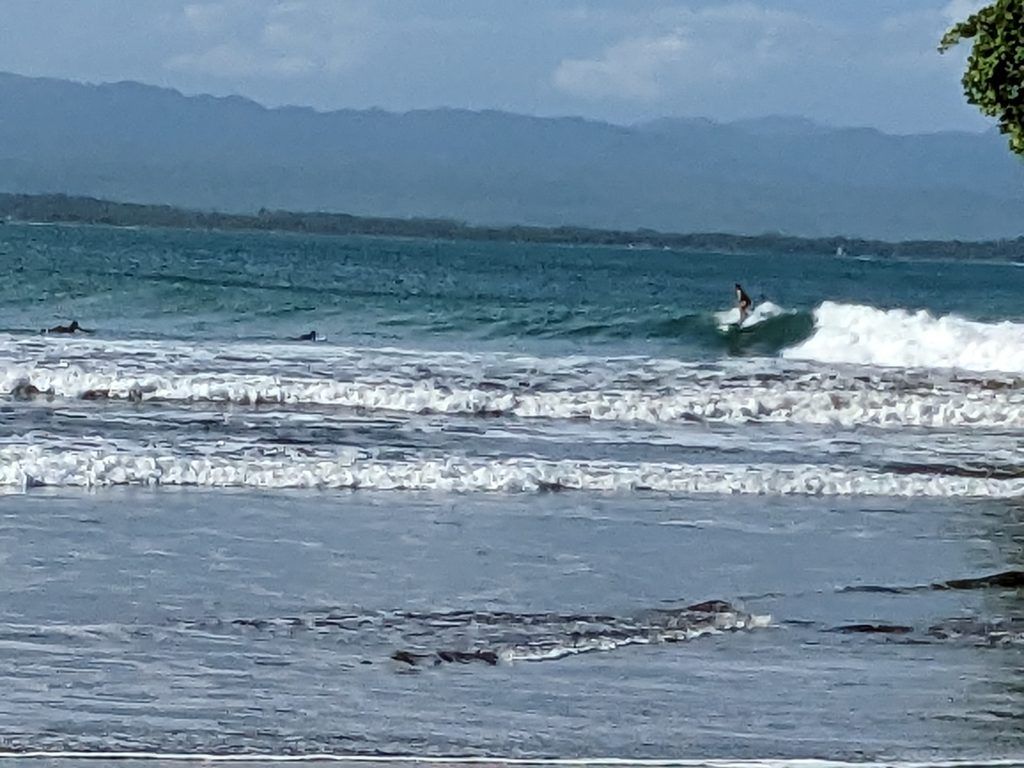
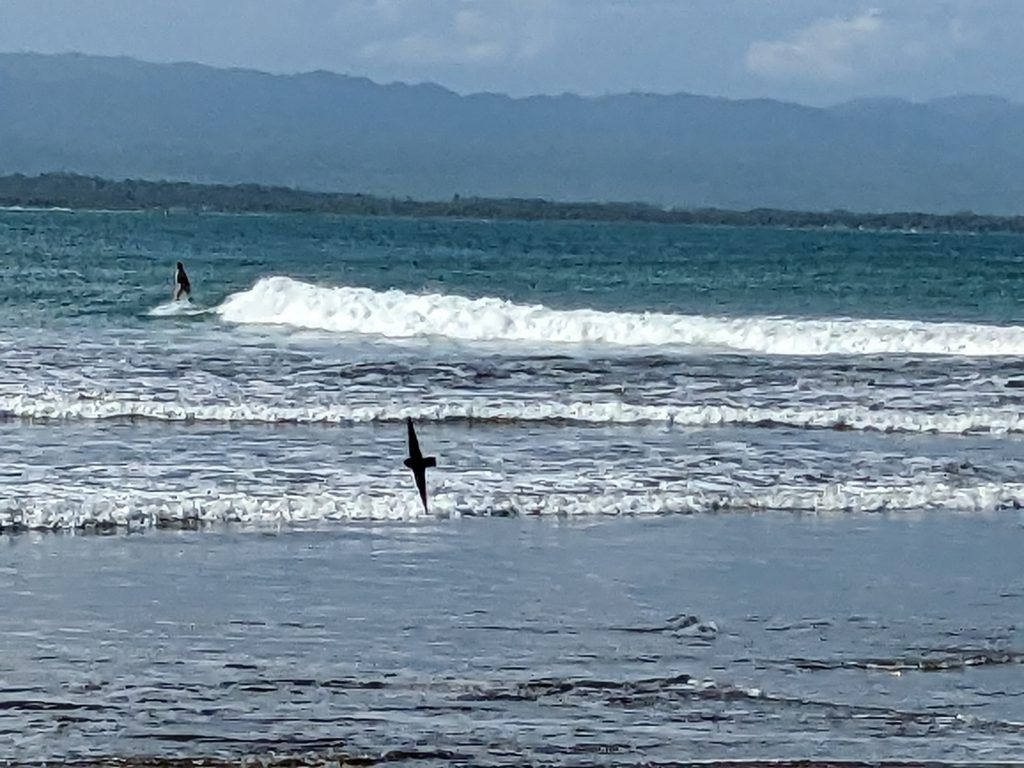
While, as usual, I missed way more waves than I caught, I was still lucky enough to catch this long ride numerous times during my two weeks there. However, I was not nearly as graceful as the local guy in the video below (no board walking for me). As you can see, it’s a beautiful wave for a longboard.
As a reference, when the waves were larger, all tides worked. But when they were smaller, only low tide provided consistent waves.
My second week there was the week Ramadan ended. It was a week-long government holiday in Indonesia. The Jarkarta Post estimated that over 130 million Indonesians were traveling that week. It was the first time they could do so in three years as the previous covid restrictions were ended.
This is what the main beach looked like on a normal afternoon.
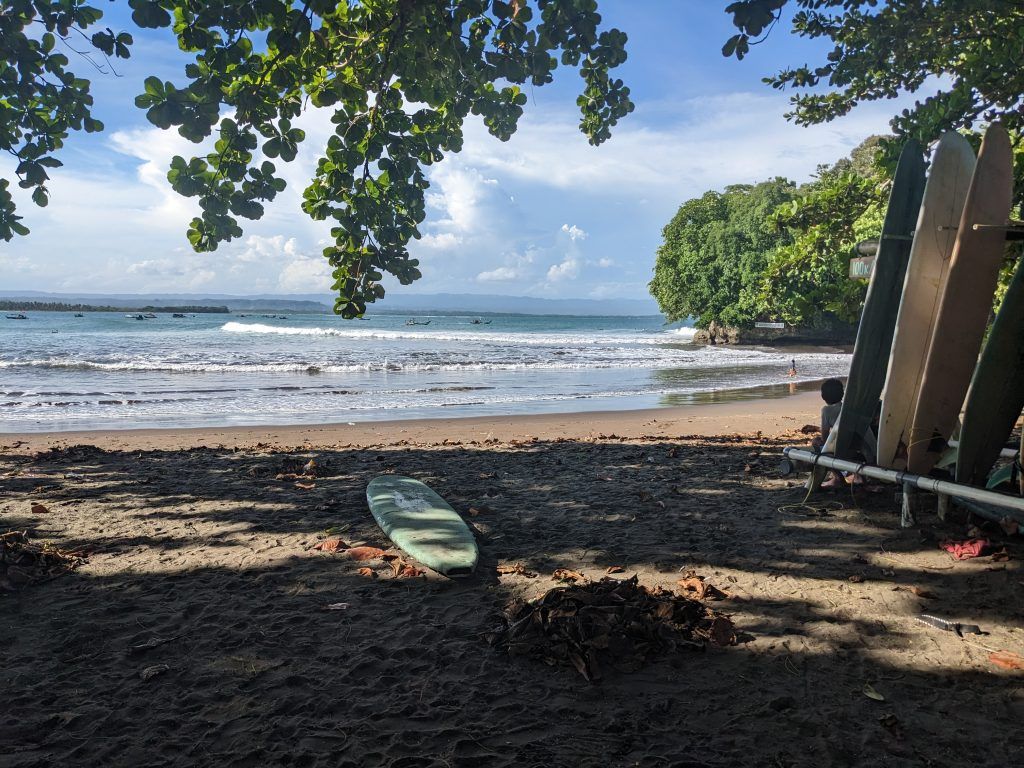
And this is what it looked like the first few days of the holiday week. Tiptoeing through this crowd with a 9’4″ longboard required more dexterity than actually surfing the waves 🙂
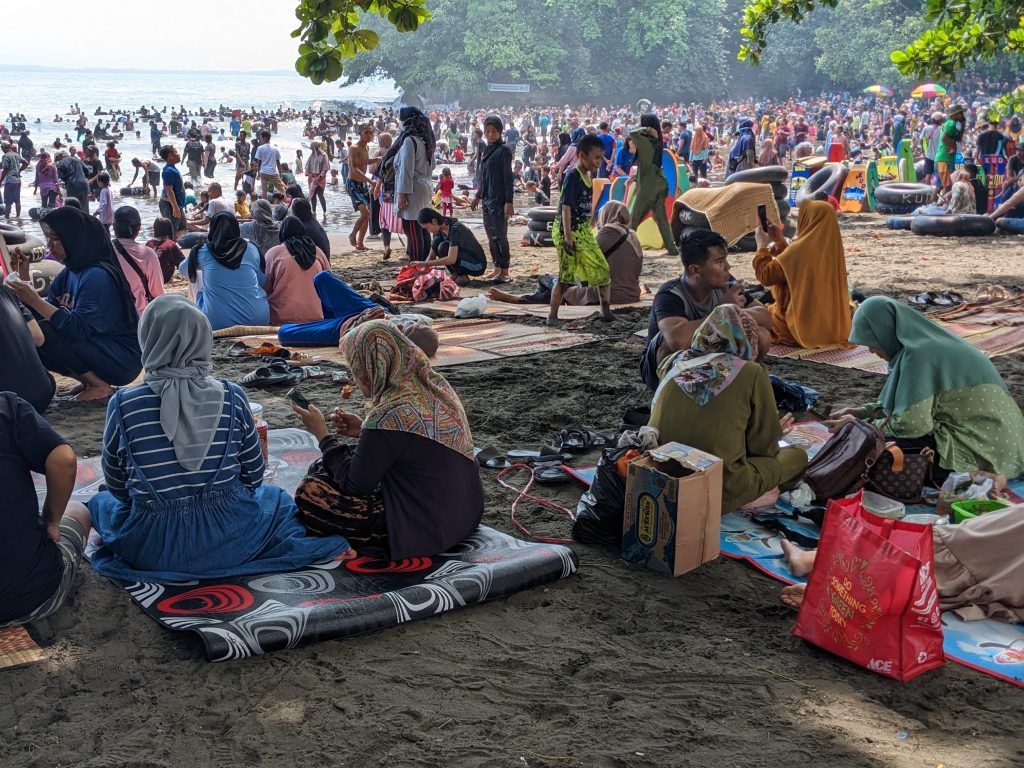
As you can see on these two videos, it was a beautiful area to cruise around on a scooter.
Here you can see the long stretch of beach to my right.
I stayed in a small, lush six unit guesthouse that added to the relaxed atmosphere of Batukaras.
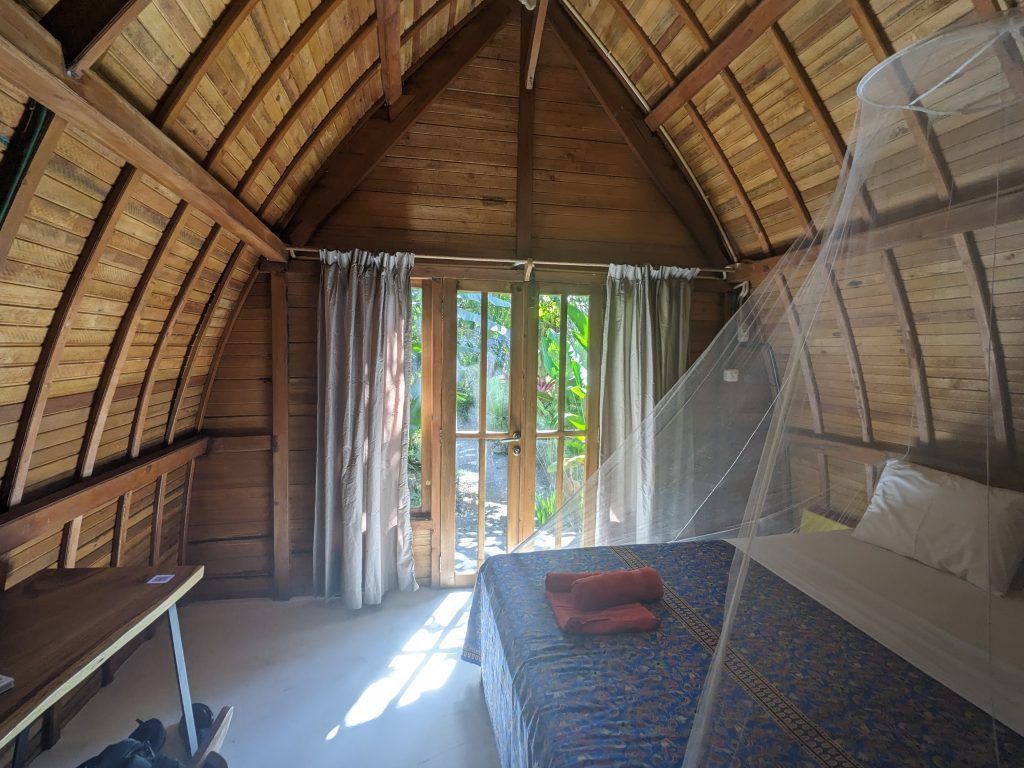
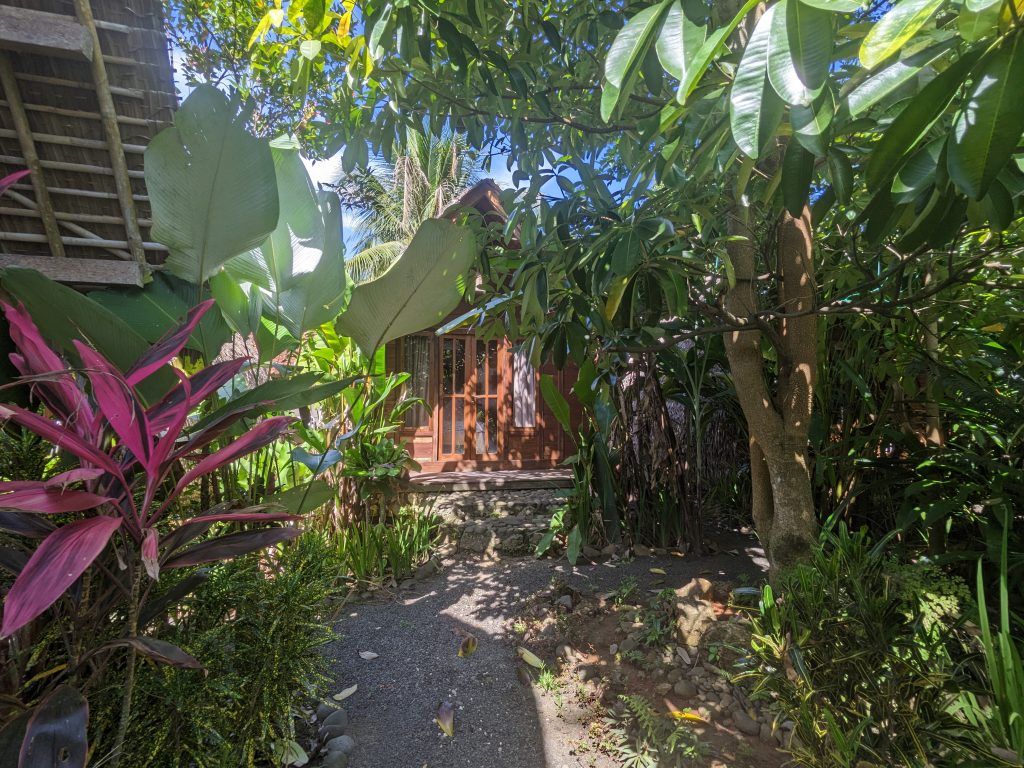
Body Rafting in Java
A short scooter ride outside of Batukaras is the Green Canyon. It was formed from millions of years of erosion from the flow of the Cijulang river.
I had a chance to go “body rafting” there, which is essentially crusing down the river in a life jacket and a helmet. A couple parts had manageable rapids where my guide had to go ahead of me and then catch me as I went past. Other parts had stronger rapids where we had to walk around and over rocks besides the river. And for most parts I was able to simply cruise slowly down the river and take the GoPro videos below. As you can see, it was a fantastic experience.
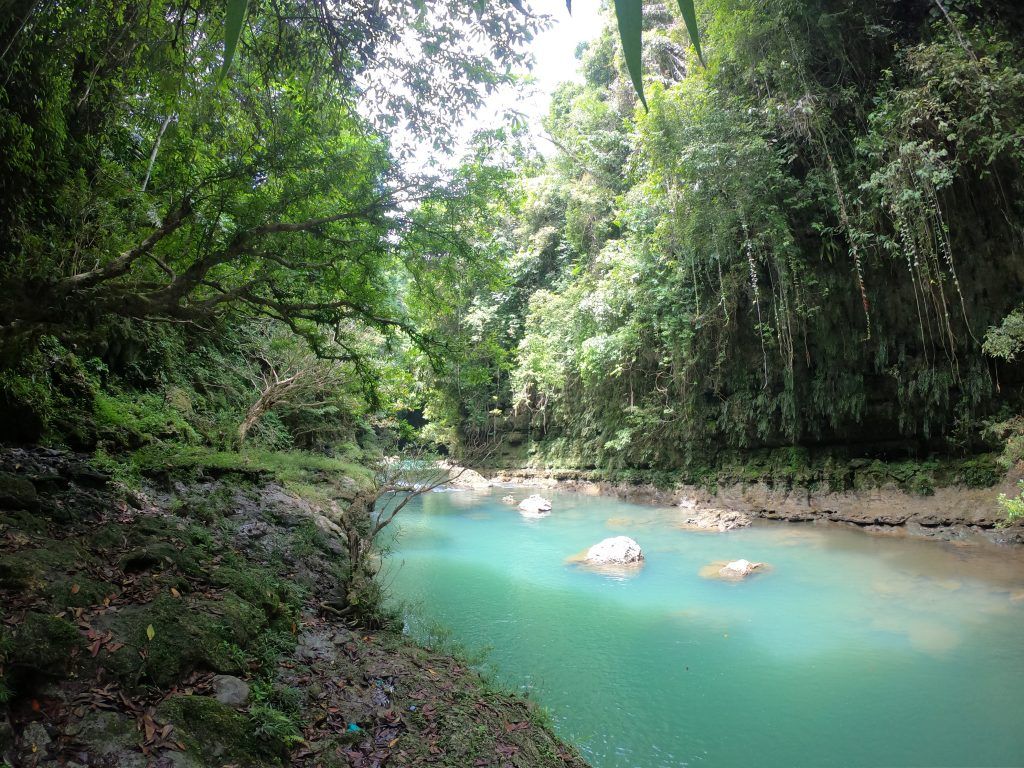
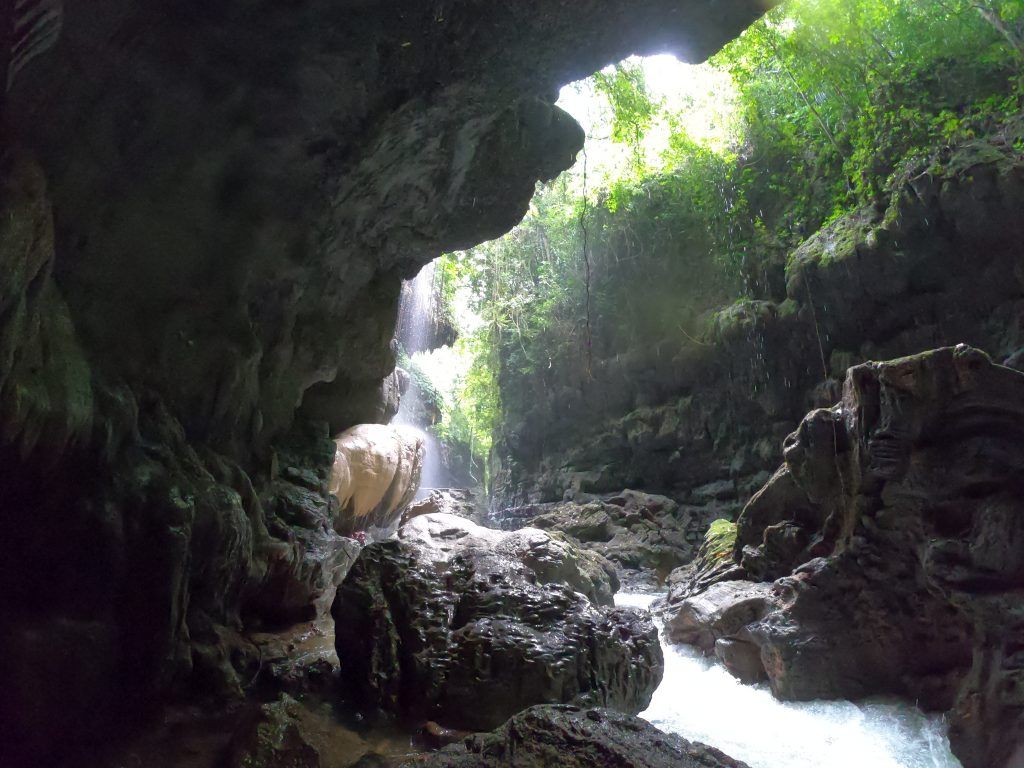
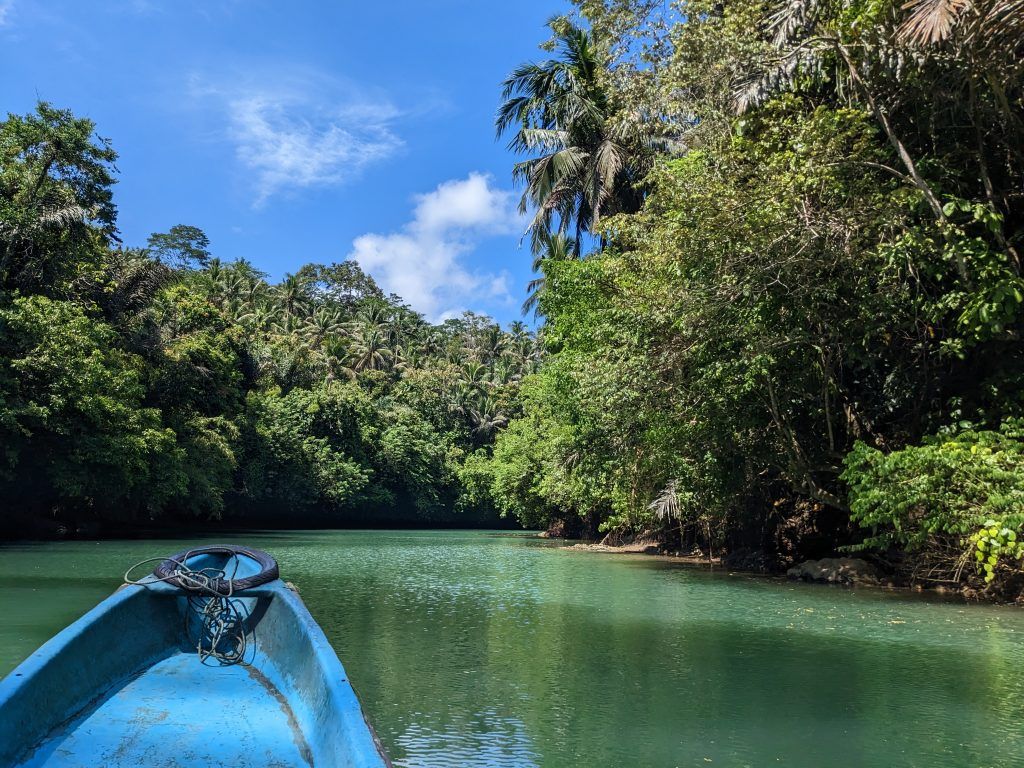
Exploring Two Splendid Temples in Java
Borobudur Temple
Borobudur is absolutely amazing. It’s an incredible monument surrounded by lush green hills.
It is the largest Buddhist temple in the world, and ranks with Bagan in Myanmar and Angkor Wat in Cambodia as one of the great archeological sites of Southeast Asia. It is Indonesia’s single most visited tourist attraction. The temple consists of nine stacked platforms, six square and three circular, topped by a central dome. It is decorated with 2,672 relief panels and originally 504 Buddha statues. The central dome is surrounded by 72 Buddha statues, each seated inside a perforated stupa.
Per Wikipedia, a lot about the temple is a mystery: “There are no known records of construction or the intended purpose of Borobudur. The duration of construction has been estimated by comparison of carved reliefs on the temple’s hidden foot and the inscriptions commonly used in royal charters during the 8th and 9th centuries. Borobudur was likely founded around 800 AD.This corresponds to the period between 760 and 830 AD, the peak of the Sailendra dynasty rule over the Mataram kingdom in central Java, when their power encompassed not only the Srivijayan Empire but also southern Thailand, Indianized kingdoms of Philippines, North Malaya (Kedah, also known in Indian texts as the ancient Hindu state of Kadaram). The construction has been estimated to have taken 75 years with completion during the reign of Samaratungga in 825.”
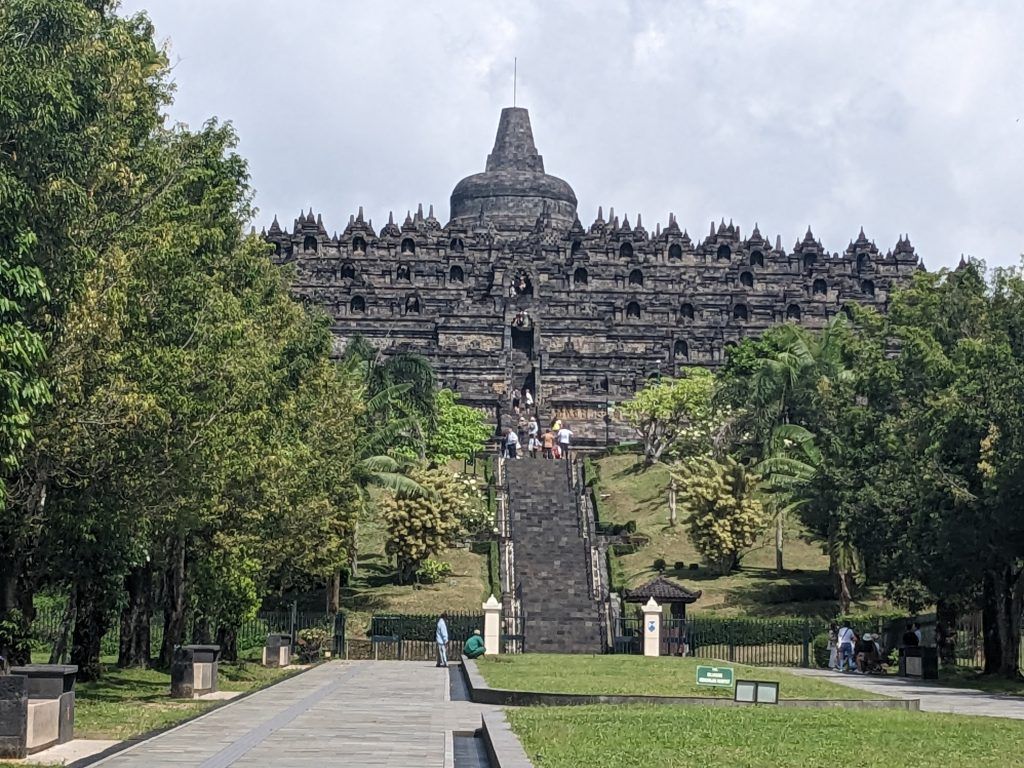
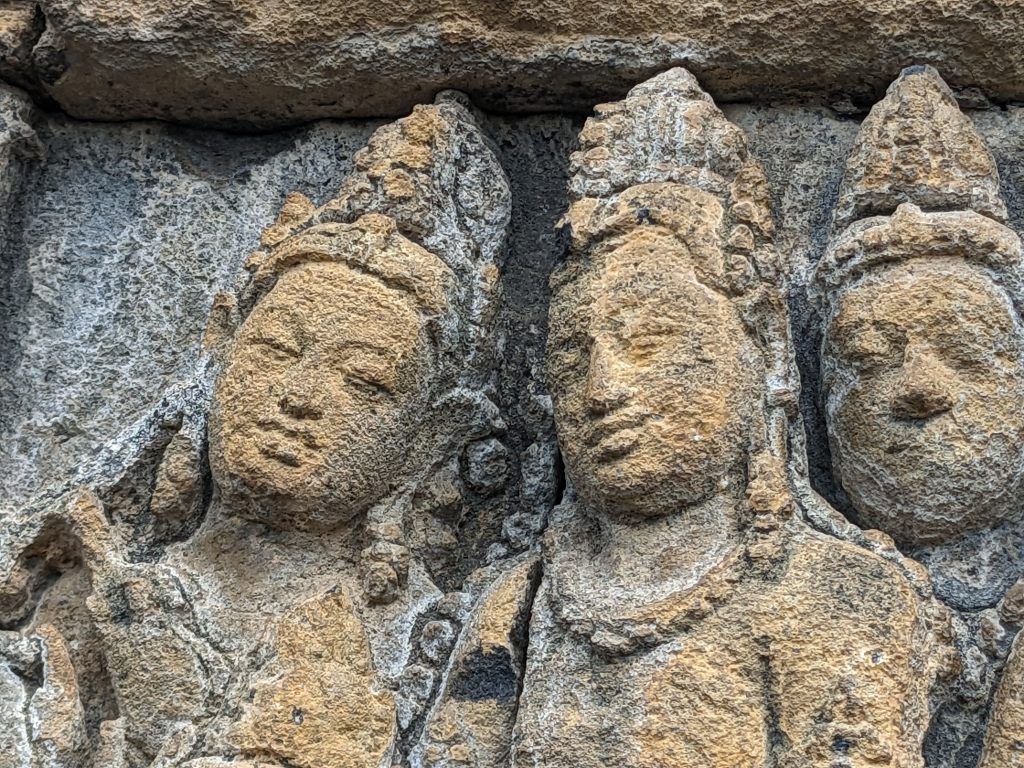
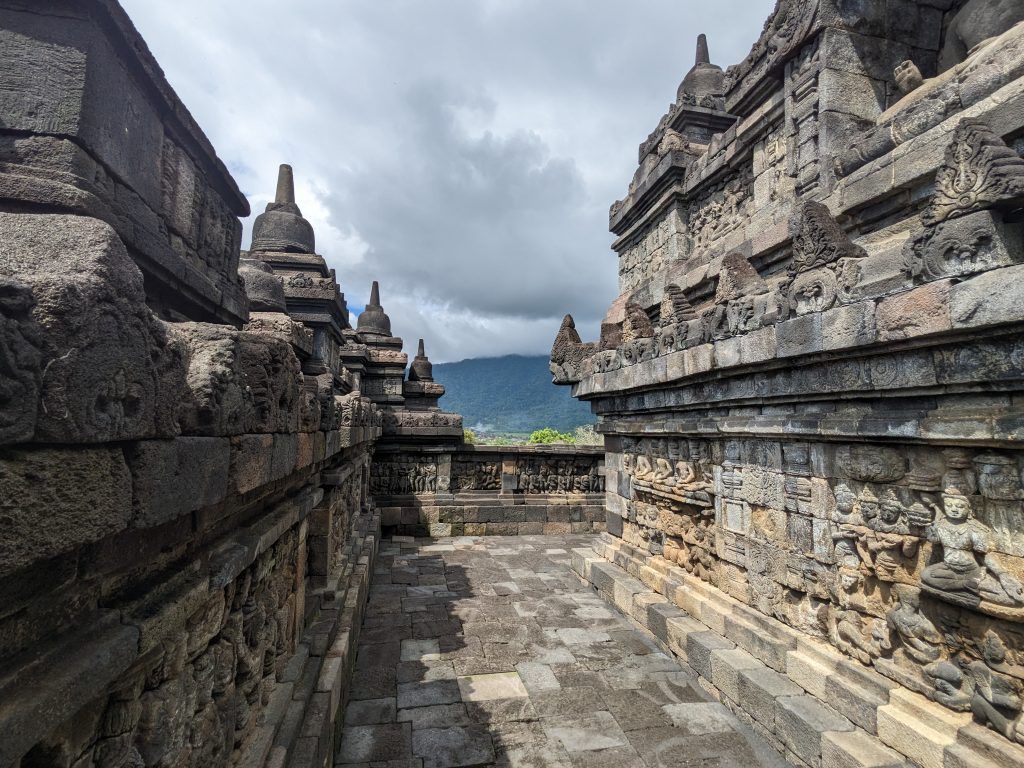
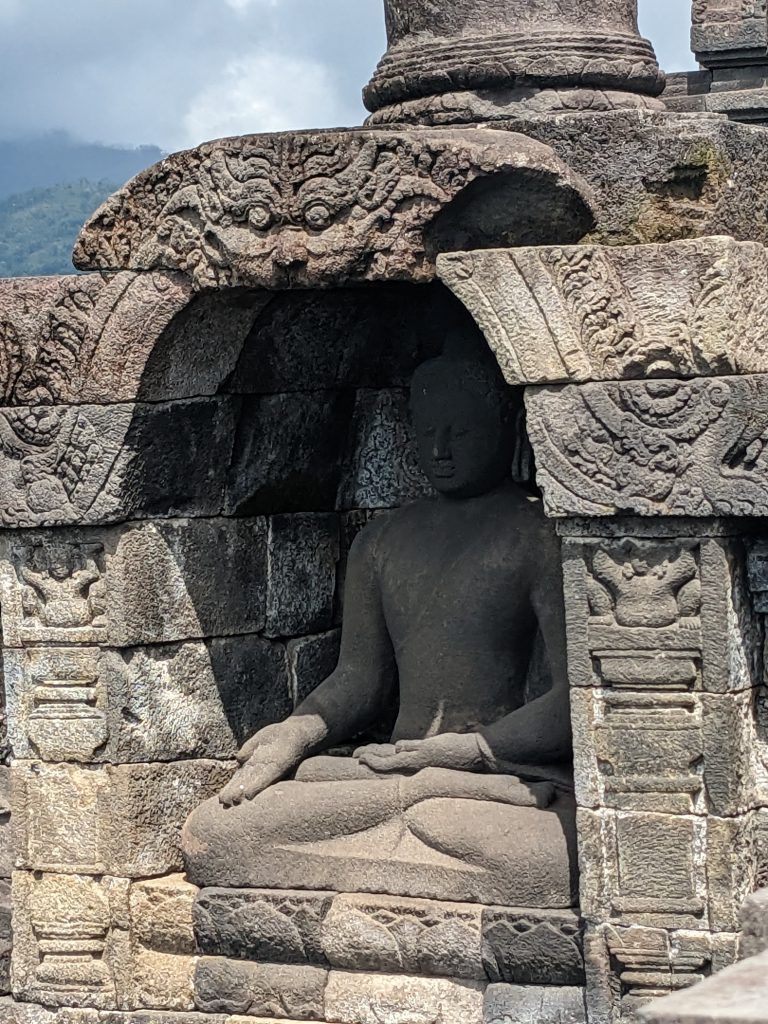
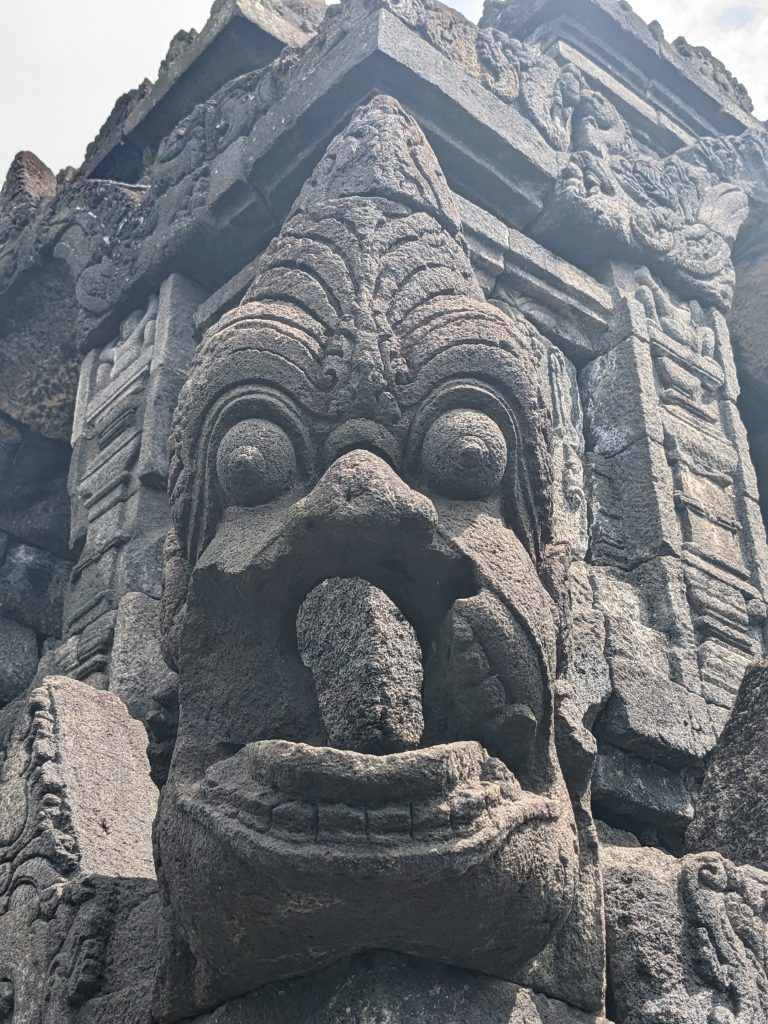
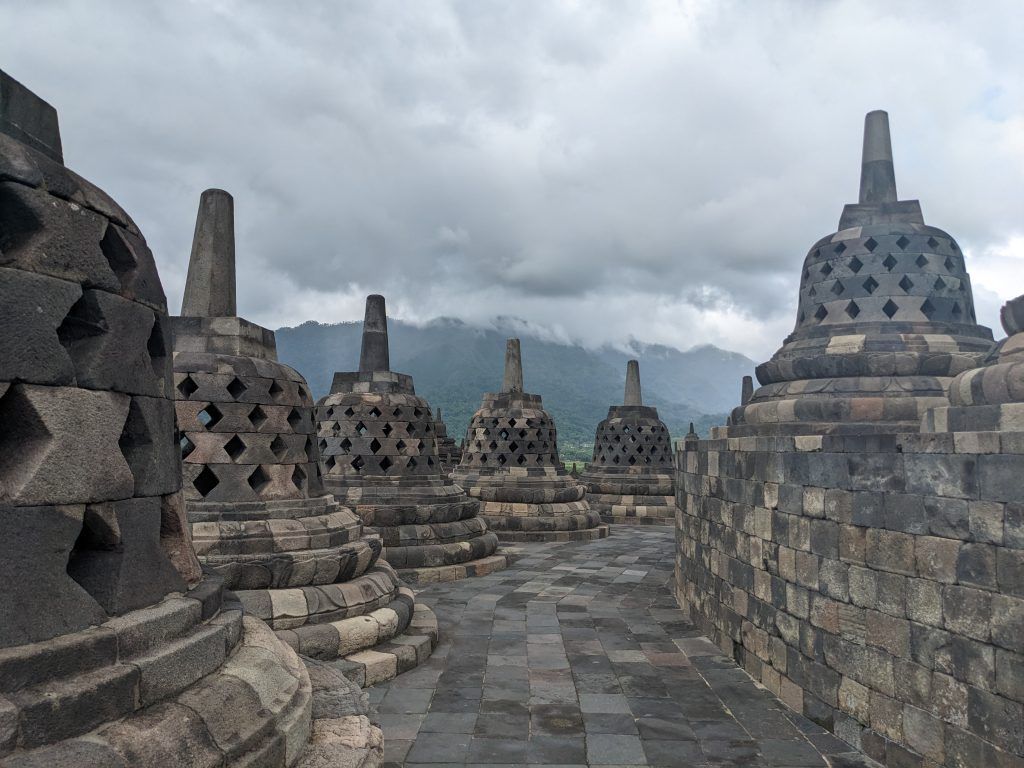
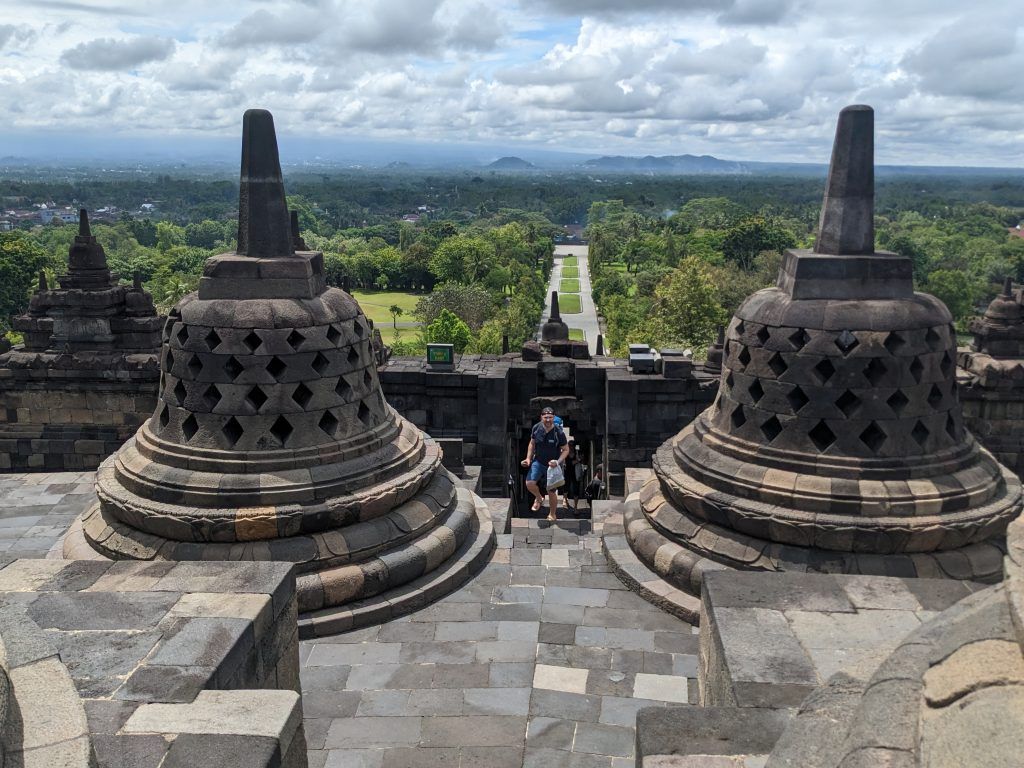
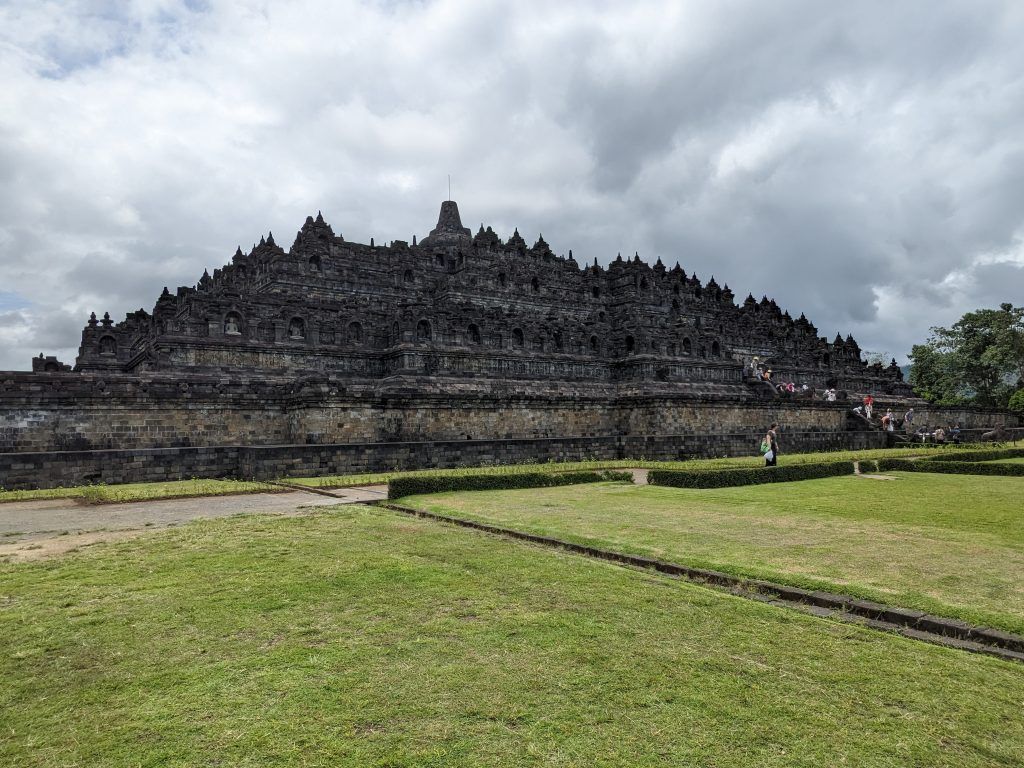
Prambanan Temple
And then, less than 2 hours away from Borobudur, also dating back from the 9th century, there’s Prambanan. Per Wikipedia: “Some historians that adhere to dual dynasty theory; suggest that the construction of Prambanan probably was meant as the Hindu Sanjaya Dynasty’s answer to the Buddhist Sailendra Dynasty’s Borobudur and Sewu temples nearby.”
It’s the largest Hindu temple site in Indonesia and the second-largest in Southeast Asia after Angkor Wat. The temple compounds originally consisted of 240 temple structures and is highlighted by the towering 47-metre-high (154 ft) central building inside the central complex of individual temples. It’s another really cool place to wander around in.
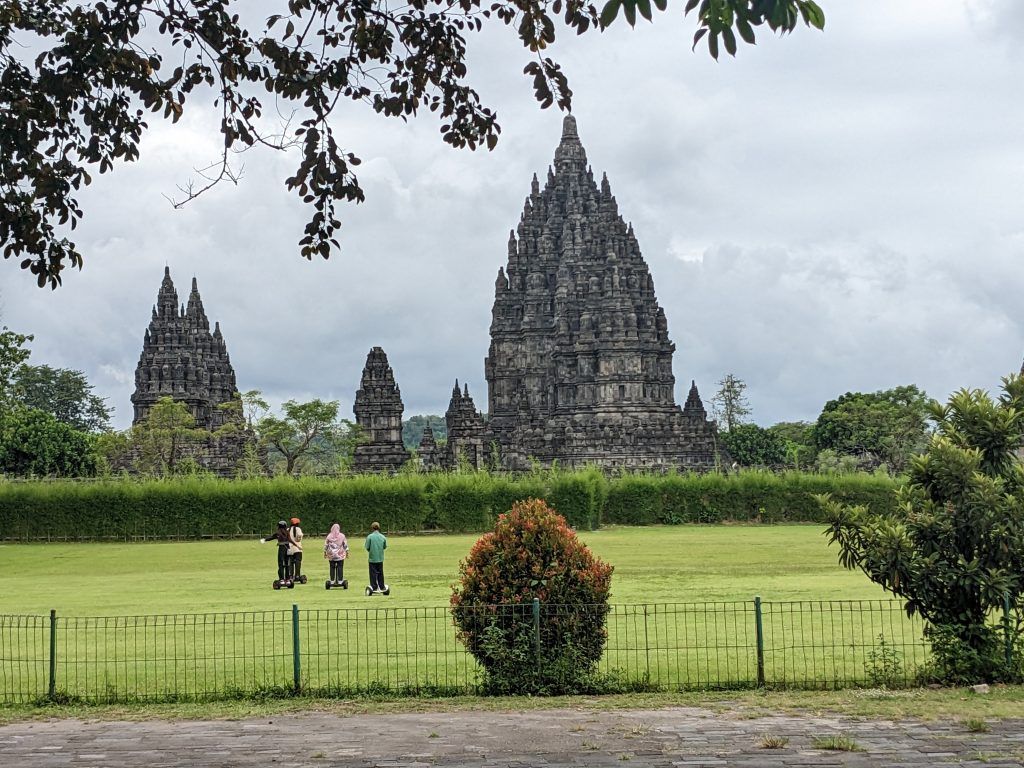
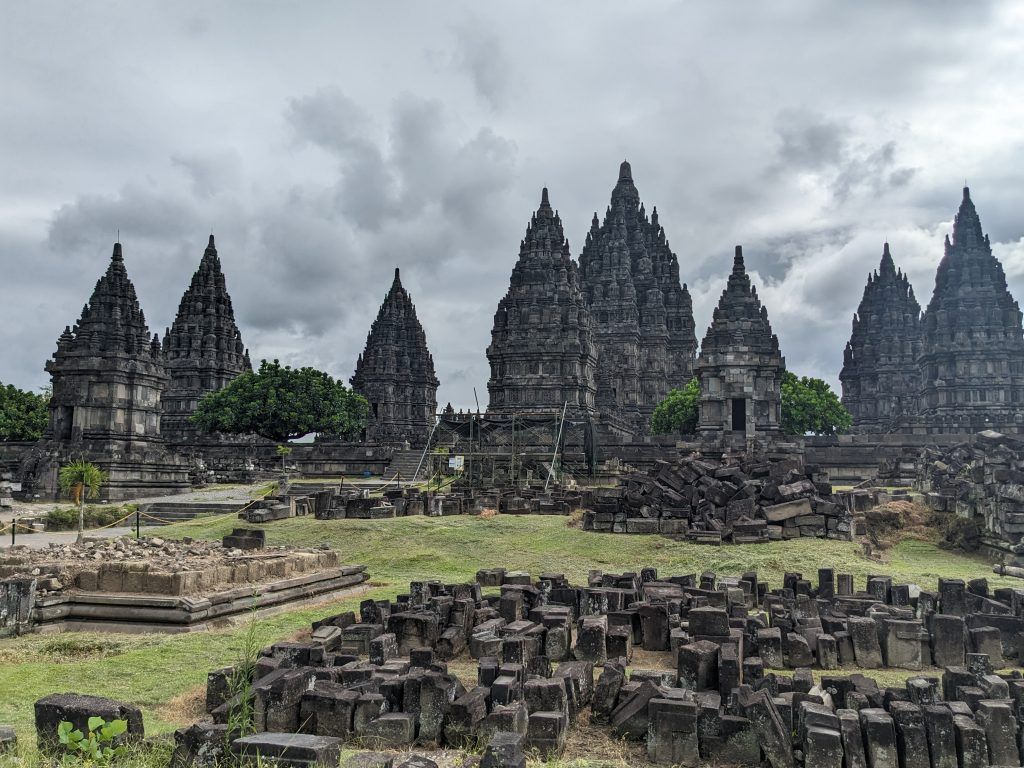
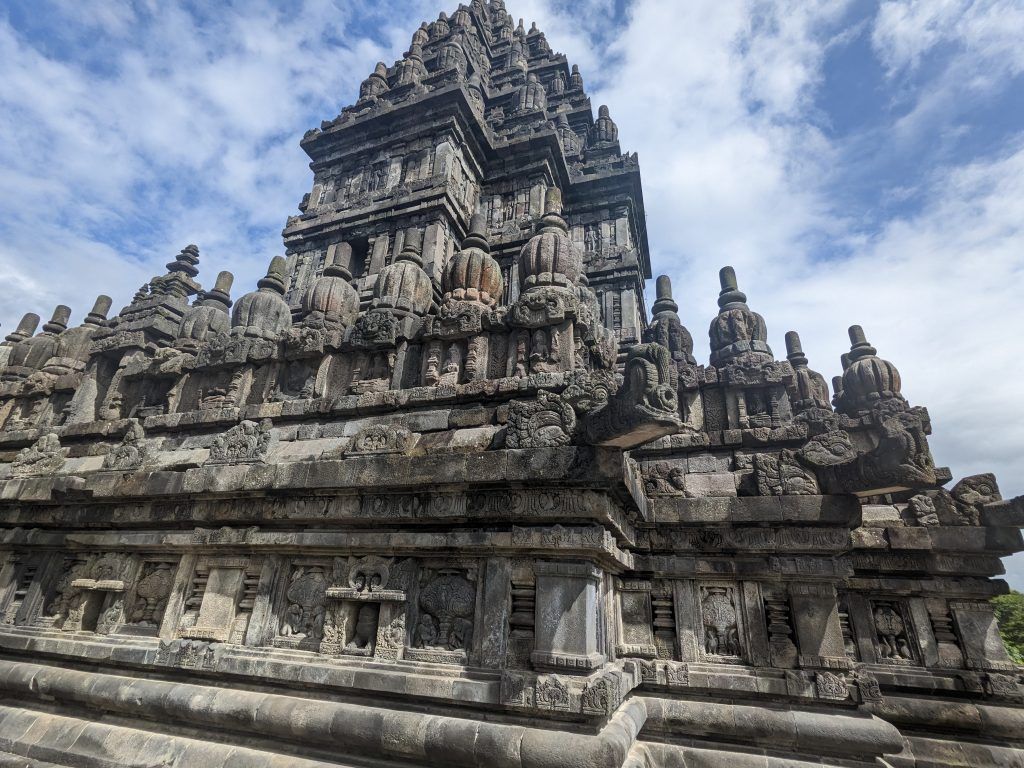
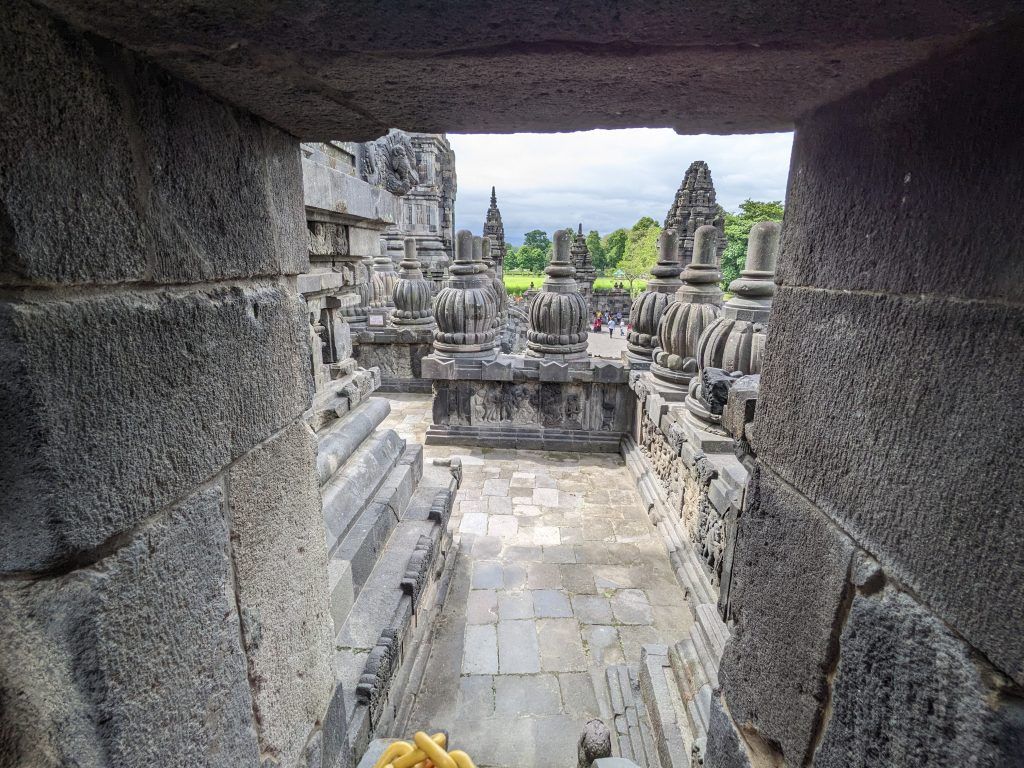
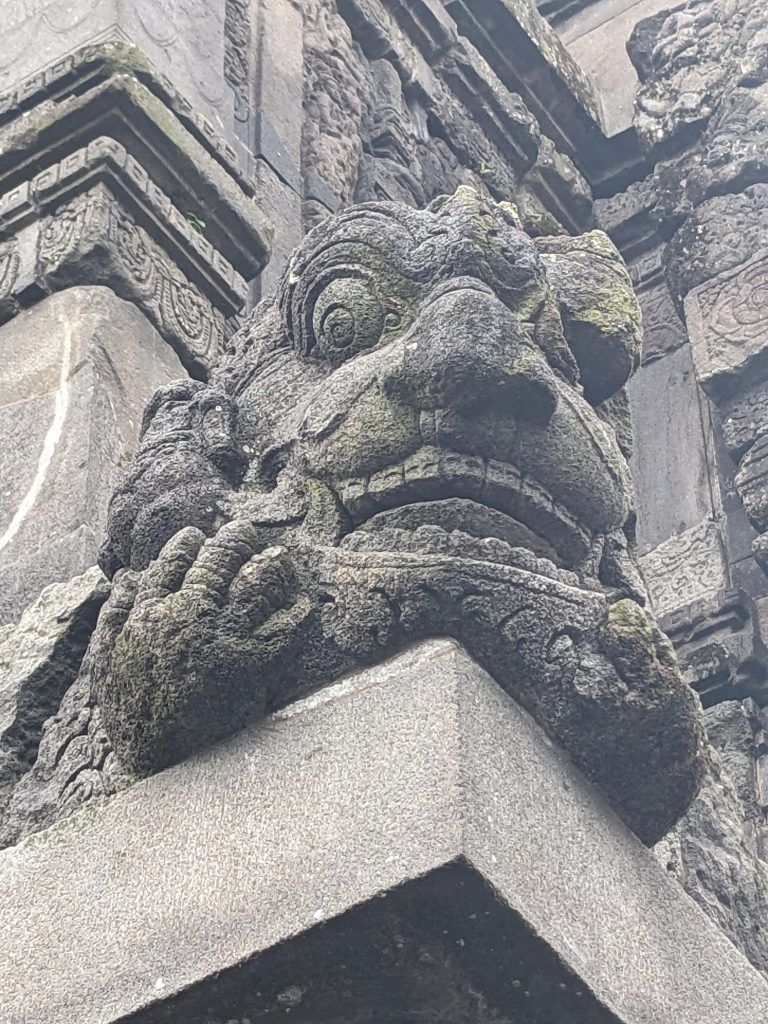
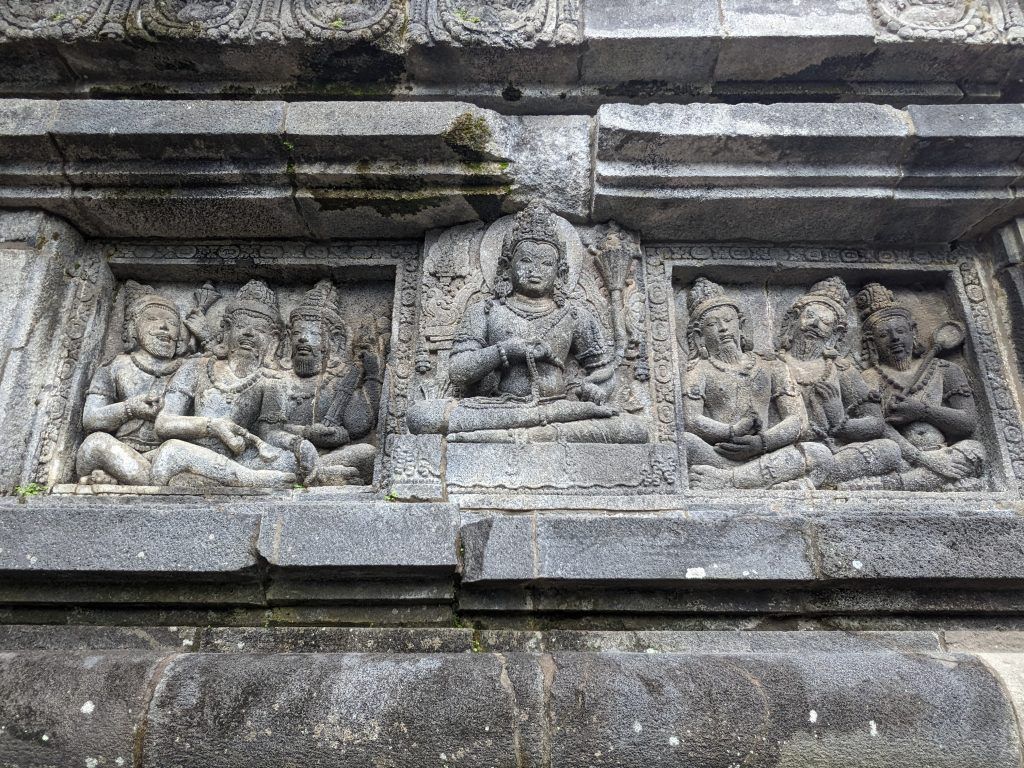
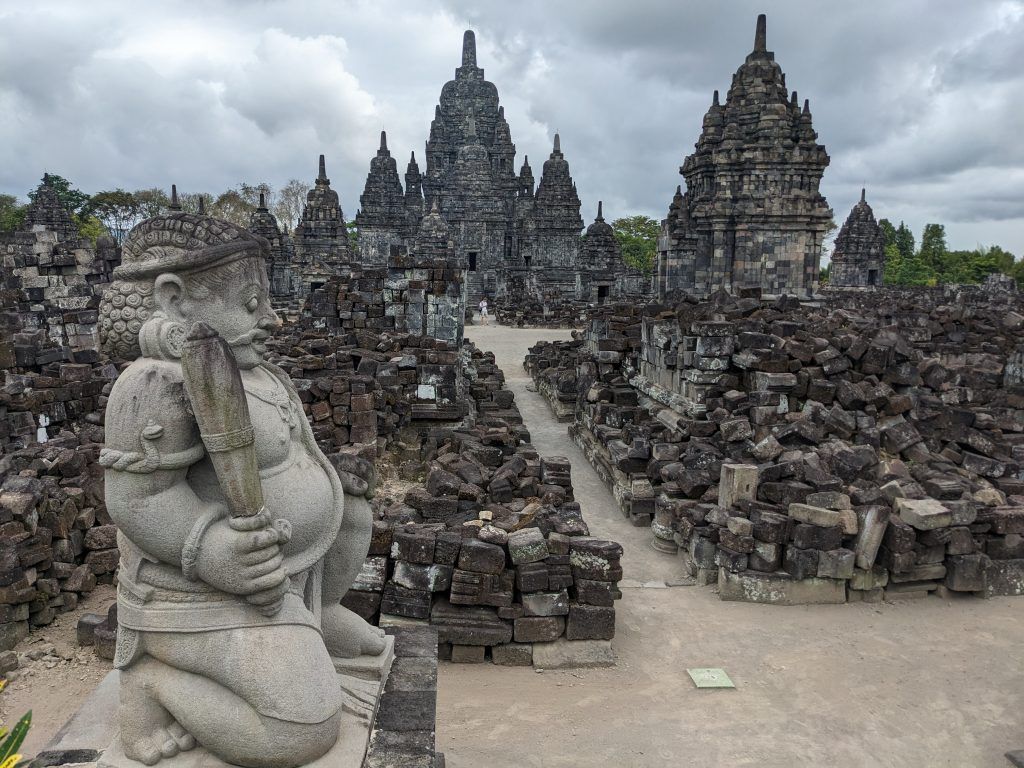
And, Finally, Yogyakarta
Yogyakara is considered the soul of Java, where its language is strongest, its arts are best preserved, and its culture is most vibrant. Lonely Planet states that it is “one of the coolest and most livable cities in Indonesia.” While, from what I experienced, the people are incredibly nice and wonderfully accomodating to tourists, and the city is nice enough, I didn’t find myself longing to spend much time there. Probably because it is a truly Indonesian city, without much vibrancy to someone who doesn’t speak Indonesian and can’t really access the eclectic potential beneath the chaotic streets.
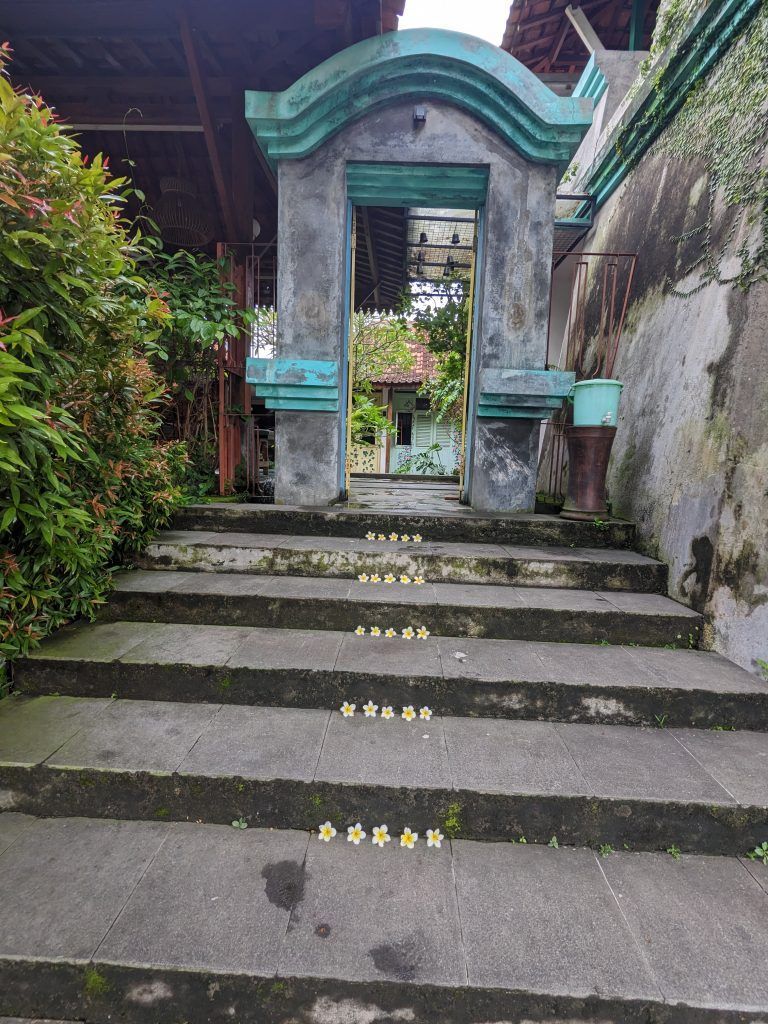
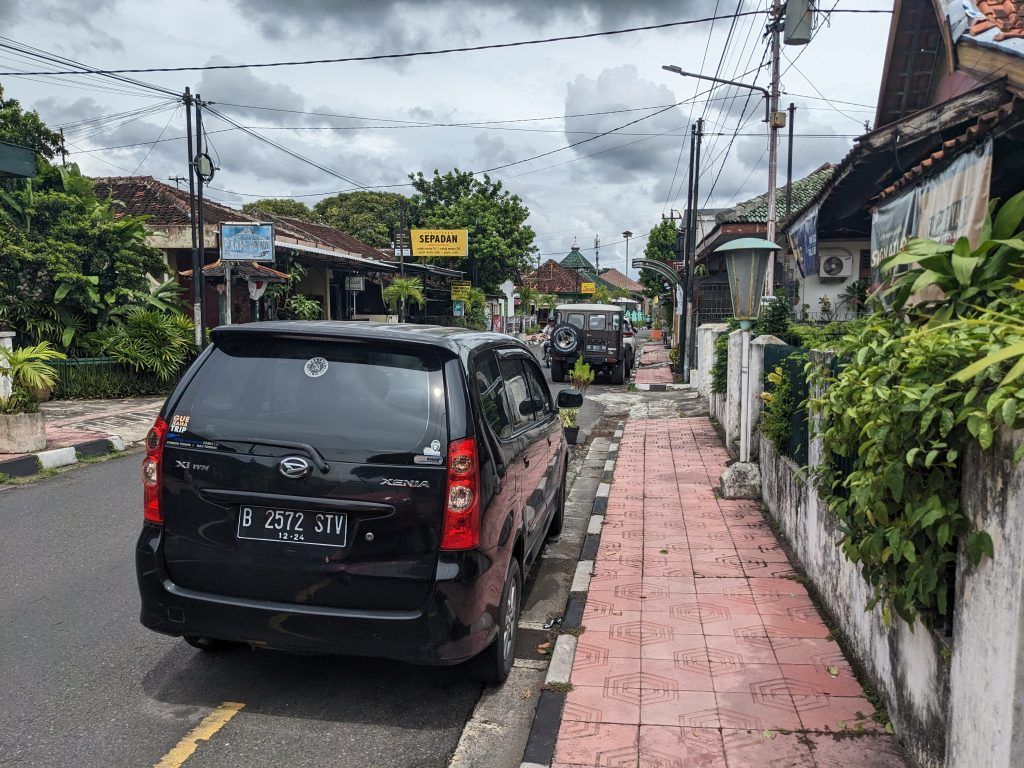
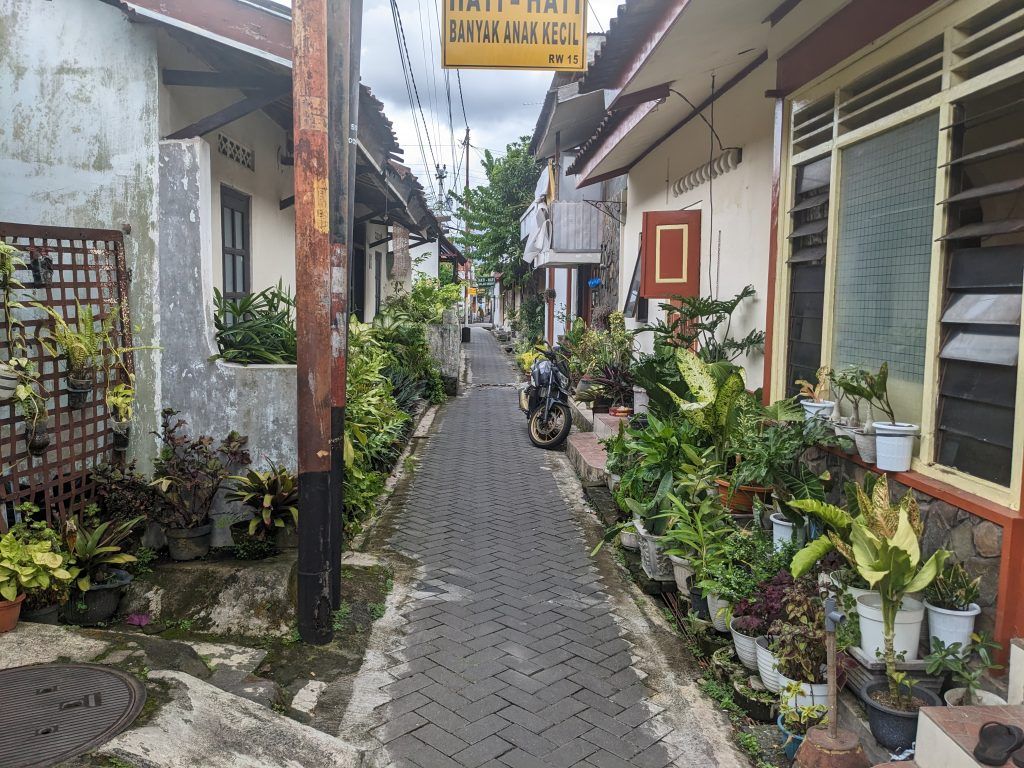
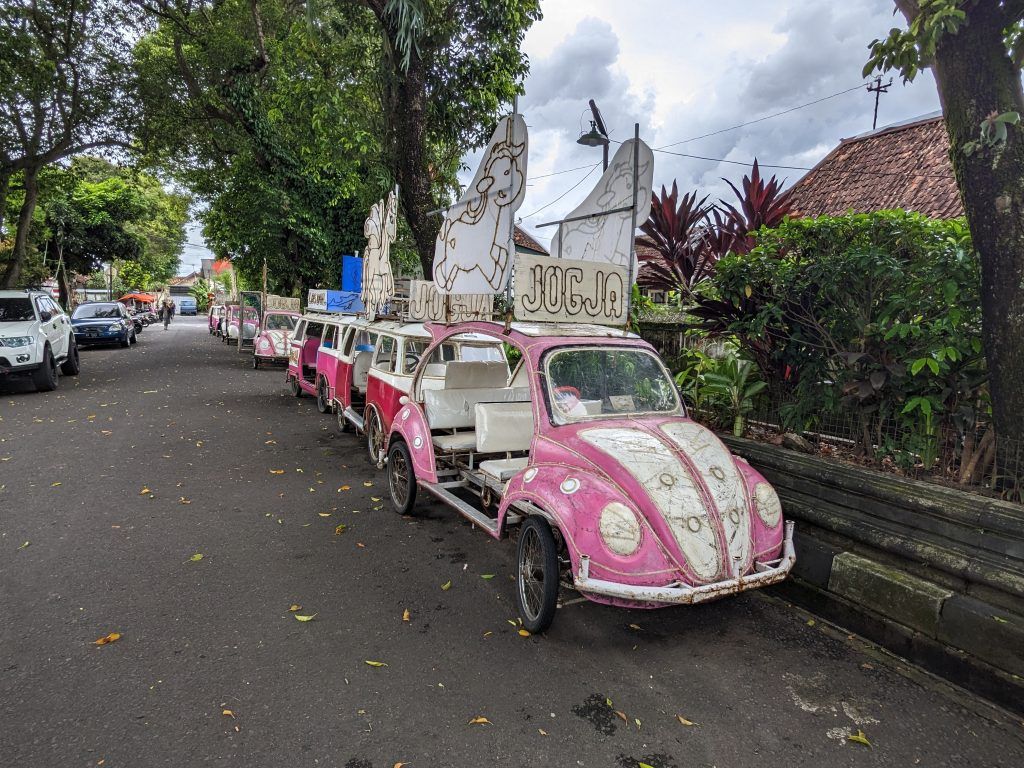
Taman Sari Palace is a once-splendid pleasure park of palaces, pools and waterways, built between 1758 and 1765, which functioned as the playground of the reigning sultan and his entourage. Much of the complex is now ruins, but enough has been restored to get a sense of its past glory.
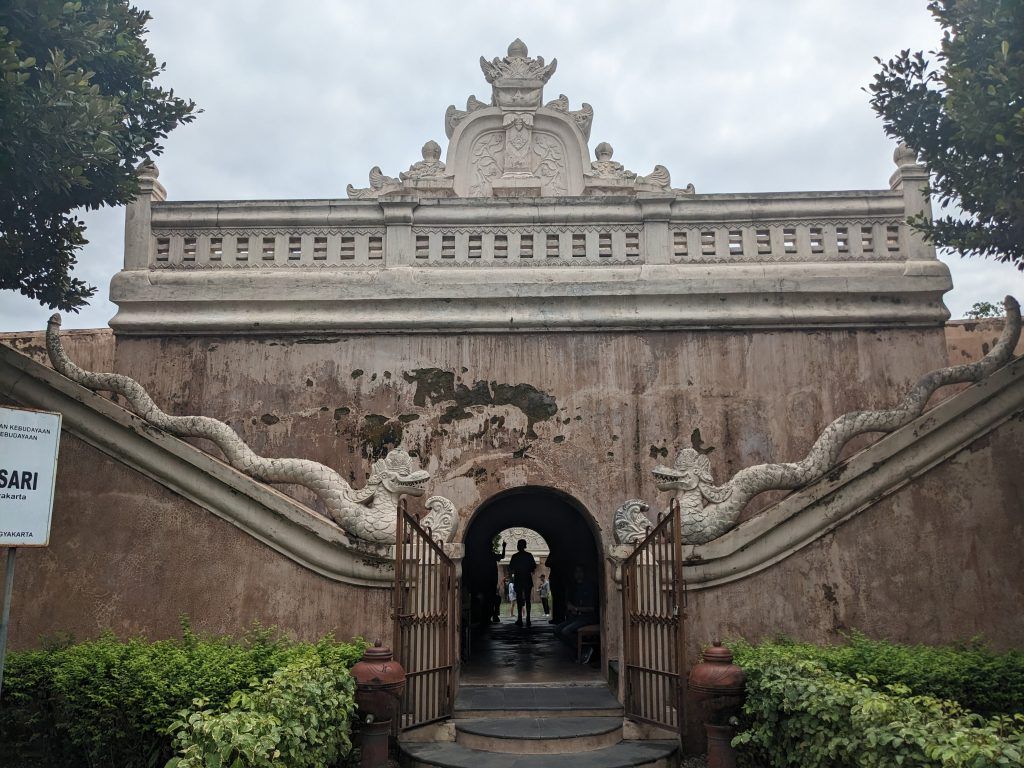
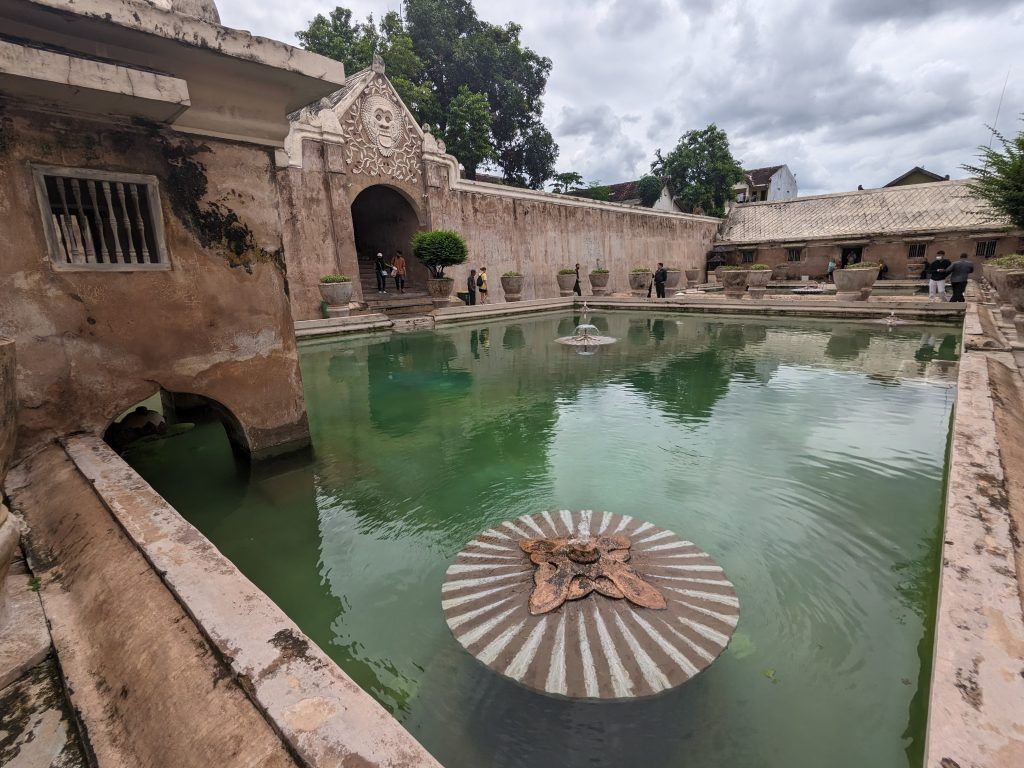
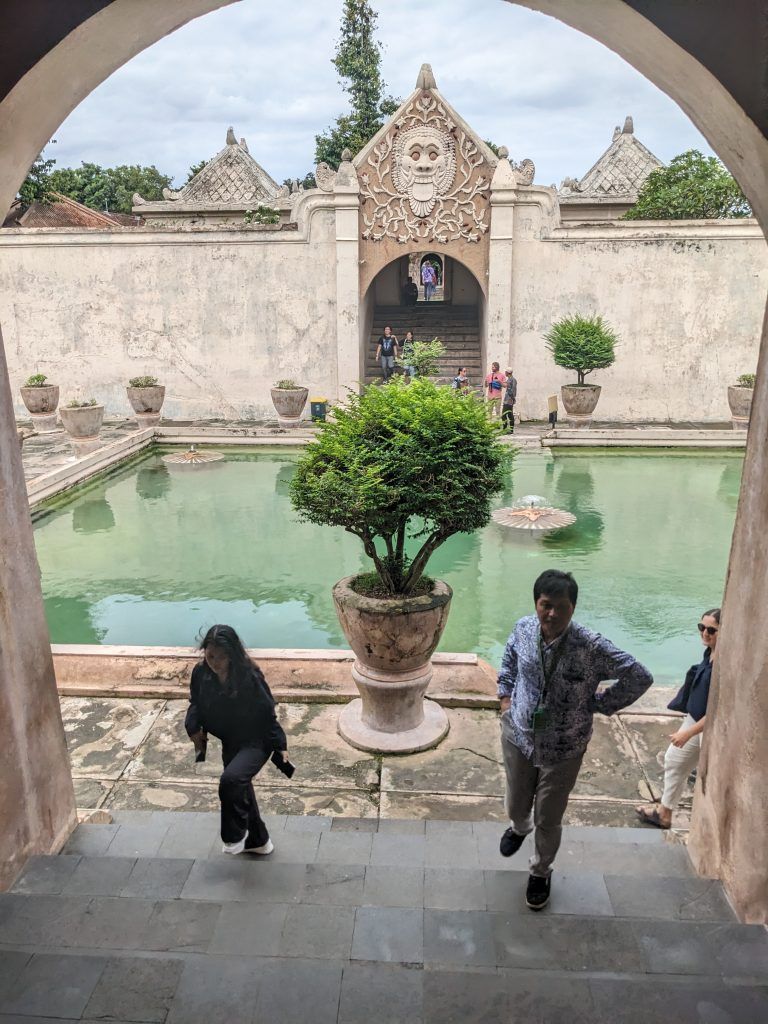
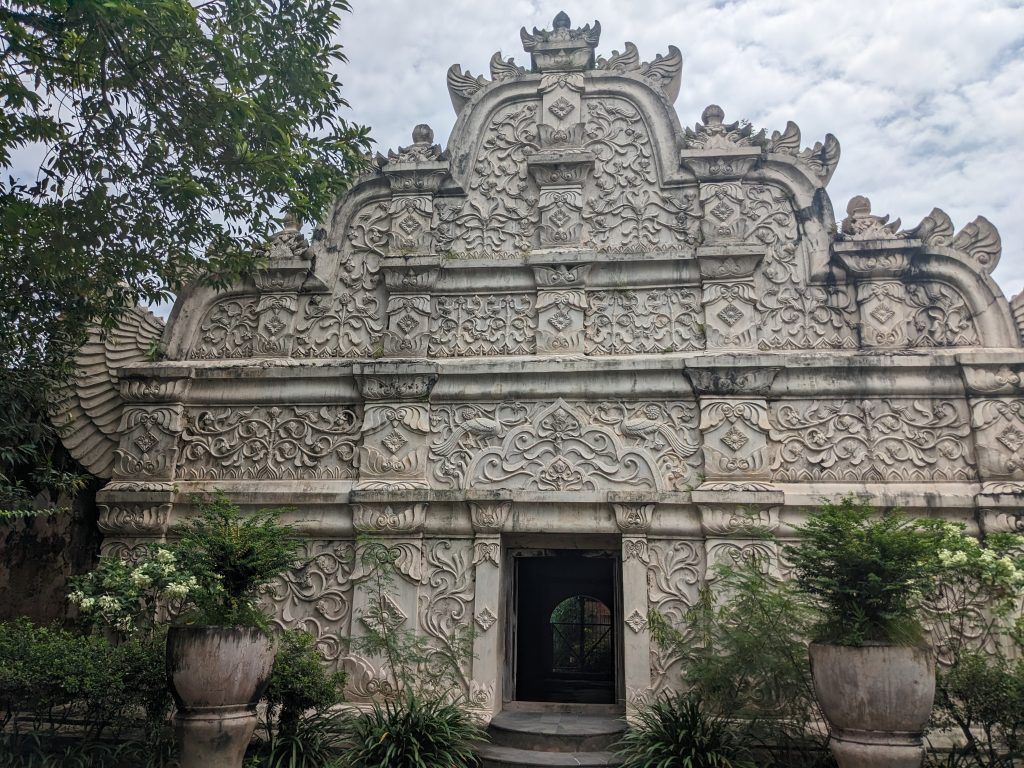
Per Lonely Planet: “Surrounding Taman Sari is a fascinating residential district of traditional Javanese houses, each of which seems to be vying for the most gorgeous bloom or vine, or the most vocal songbird. The area is home to a community of around 2000 residents, some of whom have set up shop in their front room, selling crafts or offering coffee and snacks.” As you can see below, it is a charming area.
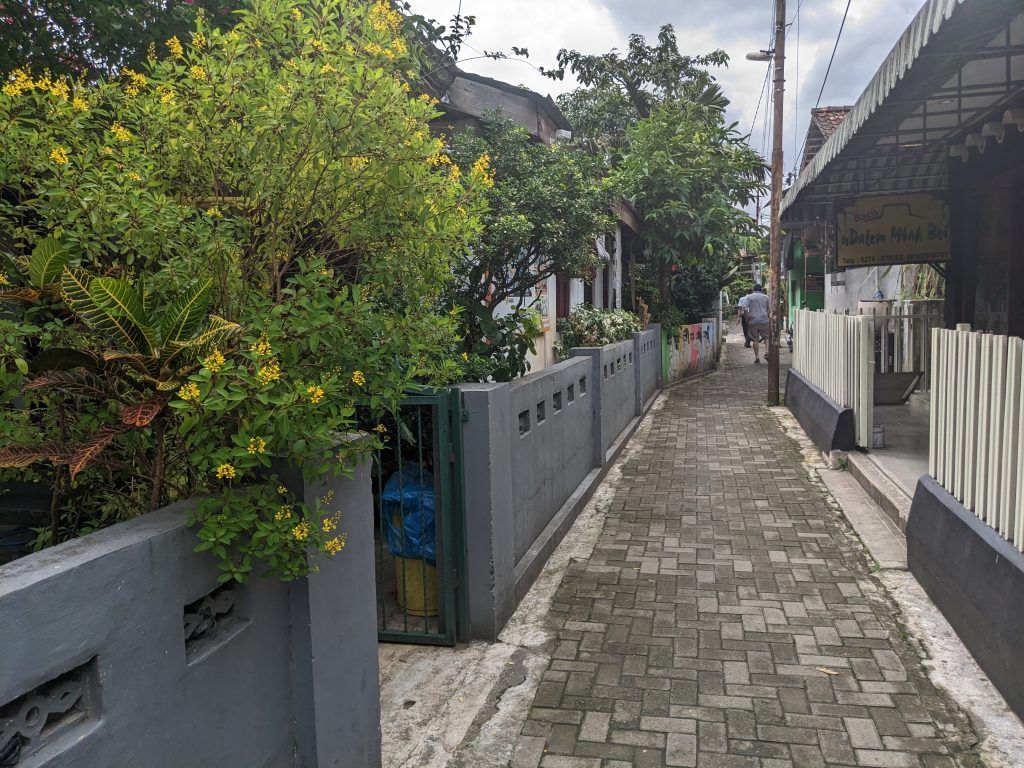
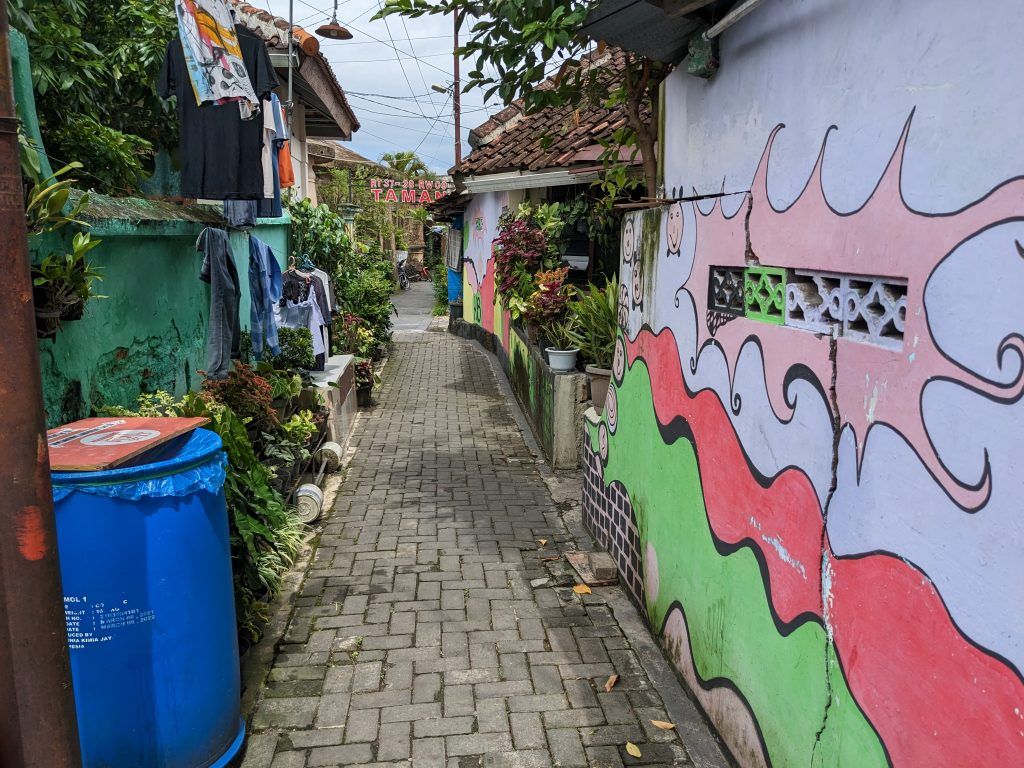
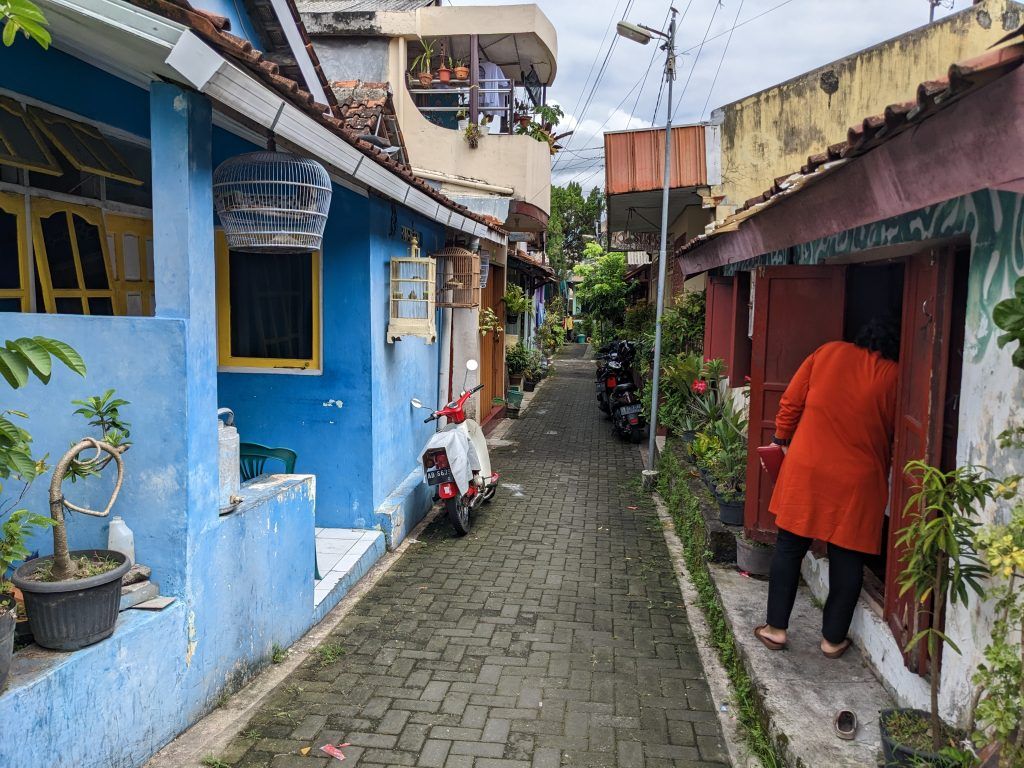
I stayed in a nice, small hotel near the main tourist sites.
